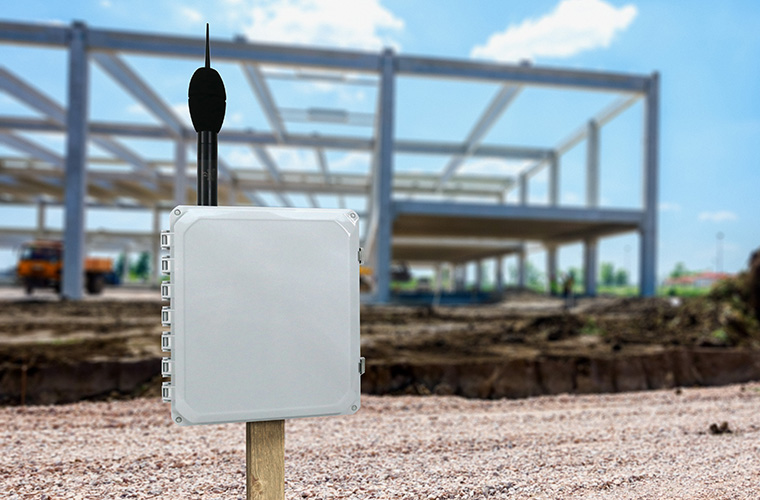Main Menu
- Home
- Products
- Applications
- Product Support
- Service
- Learn
- Product News
- About Us
- Contact Us
 Construction sites are dynamic, high-risk environments where unseen hazards can create significant challenges. Noise, dust, and vibration may seem like routine byproducts of construction work, but they can lead to serious safety issues, health risks, costly delays, and legal penalties. Monitoring these environmental factors is no longer optional–it’s essential for OSHA compliance, community relations, and project success.
Construction sites are dynamic, high-risk environments where unseen hazards can create significant challenges. Noise, dust, and vibration may seem like routine byproducts of construction work, but they can lead to serious safety issues, health risks, costly delays, and legal penalties. Monitoring these environmental factors is no longer optional–it’s essential for OSHA compliance, community relations, and project success.
Dust on construction sites often contains respirable crystalline silica, a mineral found in concrete, stone, brick, and mortar. When inhaled, silica dust can cause severe and irreversible health problems, including:
to OSHA, silica exposure can begin damaging the lungs after even short periods of high exposure. The permissible exposure limit (PEL) is just 25 µg/m³ over an 8-hour time-weighted average – a level almost impossible to judge without proper monitoring.
Construction workers are regularly exposed to hazardous noise from equipment such as jackhammers, saws, and heavy machinery. Prolonged exposure above 85 dBA can lead to permanent hearing damage, while impulsive sounds like hammering or blasting can cause immediate harm.
Noise-related health issues include:
Vibrations from activities like pile driving, compaction, and demolition can cause two major problems:
Silica Dust Regulations
OSHA’s silica standard (29 CFR 1926.1153) sets a permissible exposure limit (PEL) of 25 µg/m³ (8-hour TWA). Employers must either follow “Table 1” – which outlines effective controls like water suppression or vacuums – or perform exposure monitoring and choose controls accordingly. Employers must also provide medical exams, training, and maintain detailed exposure and medical records.
Noise Requirements
Exposure above action levels triggers the requirement for a Hearing Conservation Program, entailing noise monitoring, audiometric testing, training, provision of hearing protection, and comprehensive recordkeeping.
Structural & Geotechnical Risks from Vibration
While vibration is less prescriptively regulated federally, local ordinances and project-specific agreements often include strict limits to protect neighboring structures and minimize public disturbance.
Unchecked ground vibration can lead to
Monitoring vibration levels helps prevent costly disputes, claims, and repairs – while protecting your reputation.
| Hazard | OSHA Standard | Limit / Requirement |
|---|---|---|
| Silica Dust | 29 CFR 1926.1153 | PEL = 25 µg/m³ (8-hr TWA) |
| Noise | 29 CFR 1926.52 | Action Level = 85 dBA |
| Vibration | Local/Project Specs | No federal limit – local thresholds apply |
The Larson Davis Cloud Connect Environmental Monitoring System combines dust, noise, and vibration monitoring in a single platform to simplify compliance and improve safety on any construction site.
Key Features:
Monitoring noise, dust, and vibration isn’t just about compliance – it’s about safety, protecting your project, and maintaining your reputation. LDCC Environmental Monitoring Systems provide real-time data and alerts, helping you prevent problems before they happen.
Ready to safeguard your site? Connect with our team of experts to learn how LDCC can help you stay compliant, protect workers, and keep your project on track.